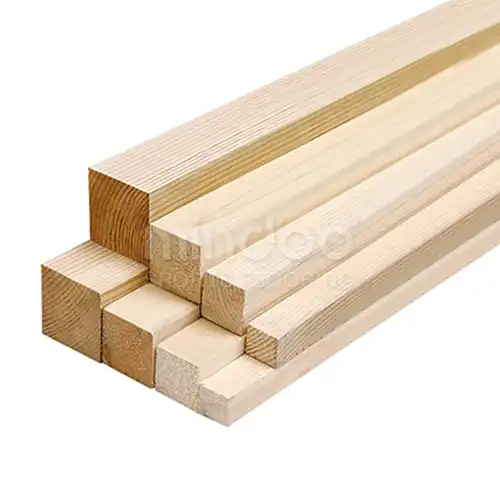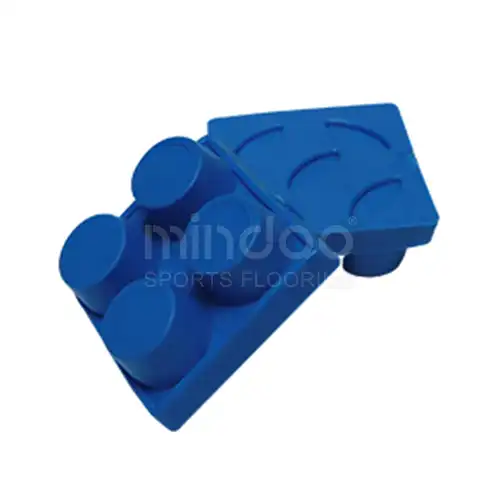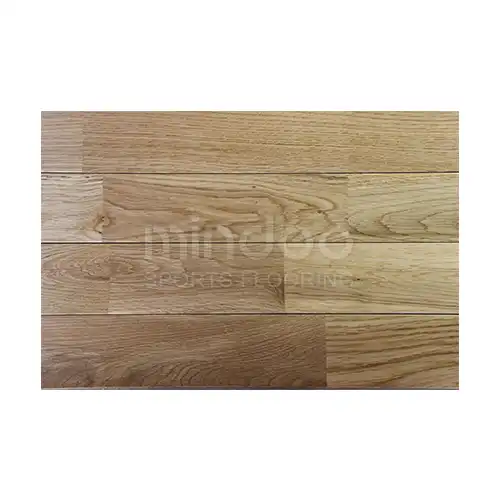How the Hardness and Elasticity of Sports Wood Flooring Impact Athletic Performance: A Scientific Analysis
Introduction: The Relationship Between Performance and Flooring Characteristics
In the design of modern sports facilities, hardwood sports flooring is a widely used and core element in many gyms and training centers. However, beyond its aesthetic appeal and durability, the physical properties of these floors—especially hardness, elasticity, and friction coefficient—have a profound impact on athletes' performance, safety, and injury risk. Scientific studies have shown that sports flooring is not just a surface; its physical properties significantly influence athletes' abilities, reaction times, and power output. Therefore, understanding the various characteristics of sports wood flooring is essential for creating an efficient and scientifically backed training environment.

1. The Impact of Hardness on Athlete Performance
Hardness is one of the most fundamental and important physical properties of sports wood flooring. It directly affects how athletes perceive the surface and how well it absorbs impact forces during physical activity. A harder floor provides a strong rebound effect, while a softer floor helps to reduce impact forces.
- Jumping Ability: According to a study published in the Journal of Sports Science & Medicine (2019), harder floors significantly improve an athlete's vertical jump height. The study found that an increase in floor hardness by 10% resulted in an approximate 4.5 cm increase in vertical jump height. In sports like basketball and volleyball, which require quick take-offs, harder flooring provides more rebound, helping athletes perform better.
- Injury Risk: However, excessively hard flooring can increase the impact force on joints, leading to higher injury risk. A study published in the British Journal of Sports Medicine (2021) showed that higher hardness flooring increased the impact force on the knee joint by 15-20%. High-intensity training and competitions on hard floors over time may lead to knee and spinal injuries, with knee injury rates being 12% higher than on softer surfaces. Thus, balancing hardness and elasticity is crucial—while harder floors may enhance certain movements, they can also compromise athlete health.
2. Elasticity and Floor Response Performance
In addition to hardness, elasticity is another crucial factor that influences athletic performance. Elasticity determines how quickly and powerfully the floor responds to the athlete's movements, often manifesting as a "rebound" effect. Adequate elasticity can provide athletes with better bounce and comfort, enhancing both explosive power and endurance.
- Explosive Power and Reaction Time: A study published in the Sports Engineering Journal (2018) showed that sports floors with moderate elasticity significantly enhance athletes' explosive power and reaction times compared to hard floors. For instance, in sprinting athletes, floors with moderate elasticity resulted in an average reduction of 0.03 seconds in reaction time, and an increase of 6% in jump height. The study indicated that adequate rebound feedback improves explosive power, especially in short-duration explosive activities like basketball and track and field.
- Fatigue and Endurance: A study in the Journal of Sports Medicine (2020) showed that athletes using highly elastic flooring reported lower fatigue levels after long, high-intensity training. The data revealed that after two hours of training, athletes on moderately elastic floors felt 18% less fatigue compared to those on hard floors. This effect demonstrates that elastic floors reduce the impact force on joints and muscles, easing fatigue and reducing the risk of injury.
3. Friction Coefficient and Movement Control
The friction coefficient is a key factor in determining athletes' stability and control on the floor. The friction coefficient of a floor influences the athlete's grip, agility, and safety. Both too high and too low friction coefficients can negatively impact performance and safety.
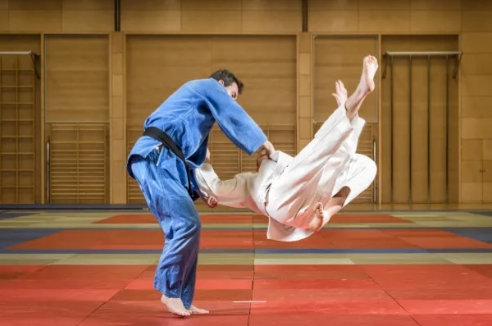
- Running and Turning Control: A study by Sports Technology Research (2017) found that basketball players performed best on floors with a friction coefficient of 0.5. A coefficient of 0.5 provided optimal grip, allowing athletes to maintain control during quick turns. The study also revealed that when the friction coefficient dropped below 0.4, athletes were 30% more likely to lose control during sharp turns, while a coefficient above 0.6 reduced athletes' reaction speed due to excessive resistance.
- Safety and Slipping Risk: According to data from the Journal of Athletic Training (2019), floors with low friction significantly increase the risk of slipping. The study found that in high-impact sports like basketball and football, the likelihood of slipping increased by 28% on floors with low friction coefficients. Conversely, floors with excessively high friction can put undue stress on athletes' joints, especially during sharp turns and sudden stops, raising the likelihood of knee and ankle injuries. Ideally, the friction coefficient should be between 0.5 and 0.6 to ensure both safety and performance.
4. Environmental Adaptability and Maintenance Needs
The performance of hardwood floors is also influenced by environmental conditions. Temperature, humidity, and other external factors can cause changes in the floor's physical properties, which in turn affect athlete performance and the floor's longevity.
- Impact of Temperature and Humidity: According to the Wood Flooring Institute, wood floors can absorb moisture in humid environments, causing them to expand, while in dry environments, they contract. These changes not only affect the appearance of the floor but also impact its hardness and elasticity. Data from the Sports Flooring Maintenance Journal (2020) indicates that in environments with humidity levels above 70%, the hardness of wood floors decreases by 5-10%, which directly impacts athletic performance. For example, insufficient rebound on floors with reduced hardness can affect jumping and acceleration.
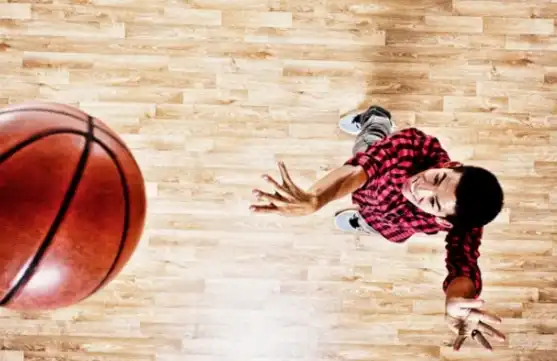
- Long-Term Performance and Maintenance: Over time, the hardness and elasticity of hardwood floors naturally decrease. According to the Sports Flooring Maintenance Journal (2020), after five years of intensive use, the hardness of hardwood flooring typically declines by 8-15%. Therefore, regular maintenance and care are essential to preserve the floor's performance. Studies show that regular maintenance can extend the life of the floor and reduce injury rates due to aging flooring by an average of 25%.
When choosing the right flooring for sports venues, it is essential to understand the interplay between these factors and ensure a balanced approach. By precisely matching the flooring to the specific needs of each sport, sports venues can provide athletes with a comfortable and safe environment that helps them perform at their best.
